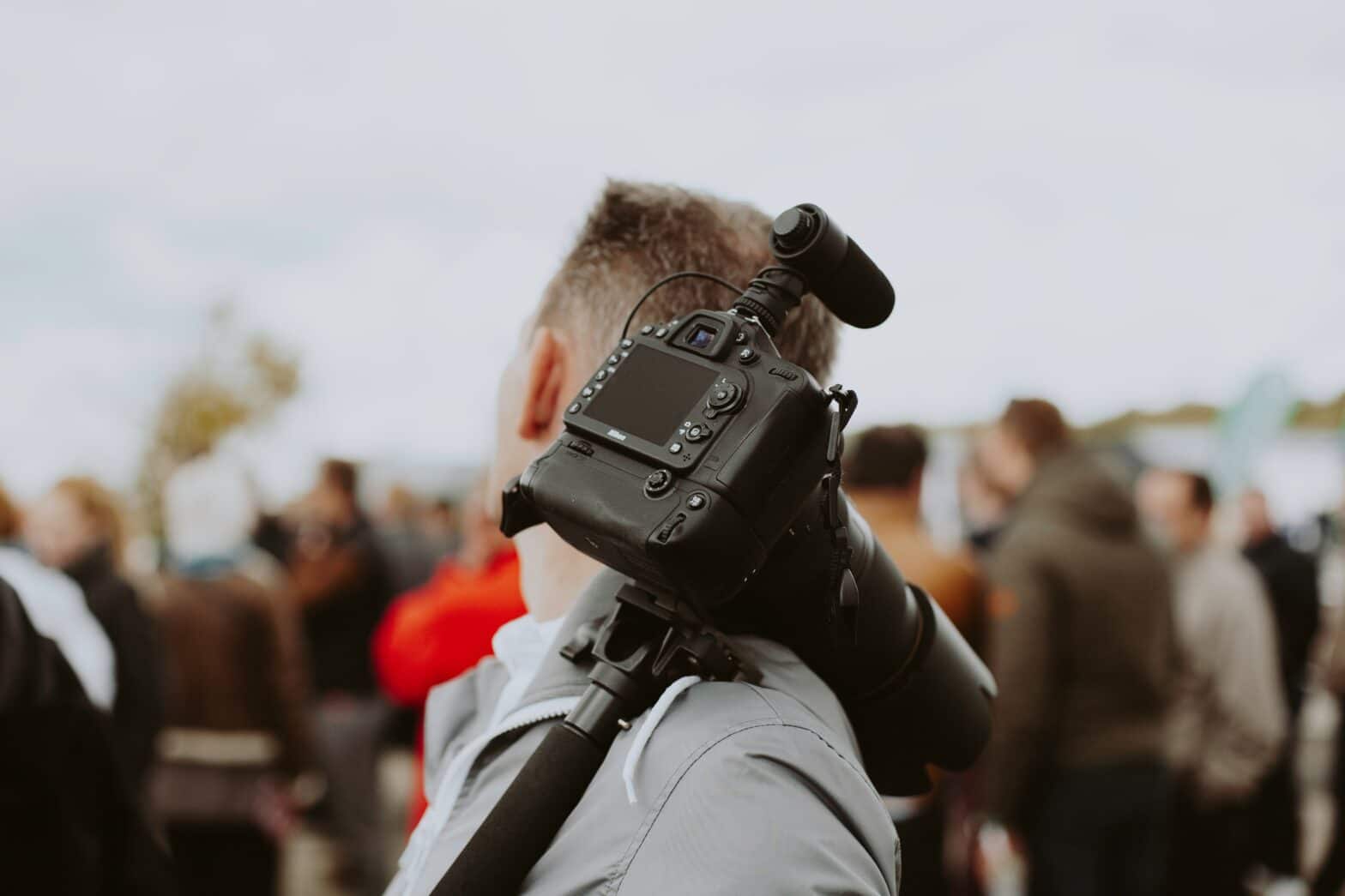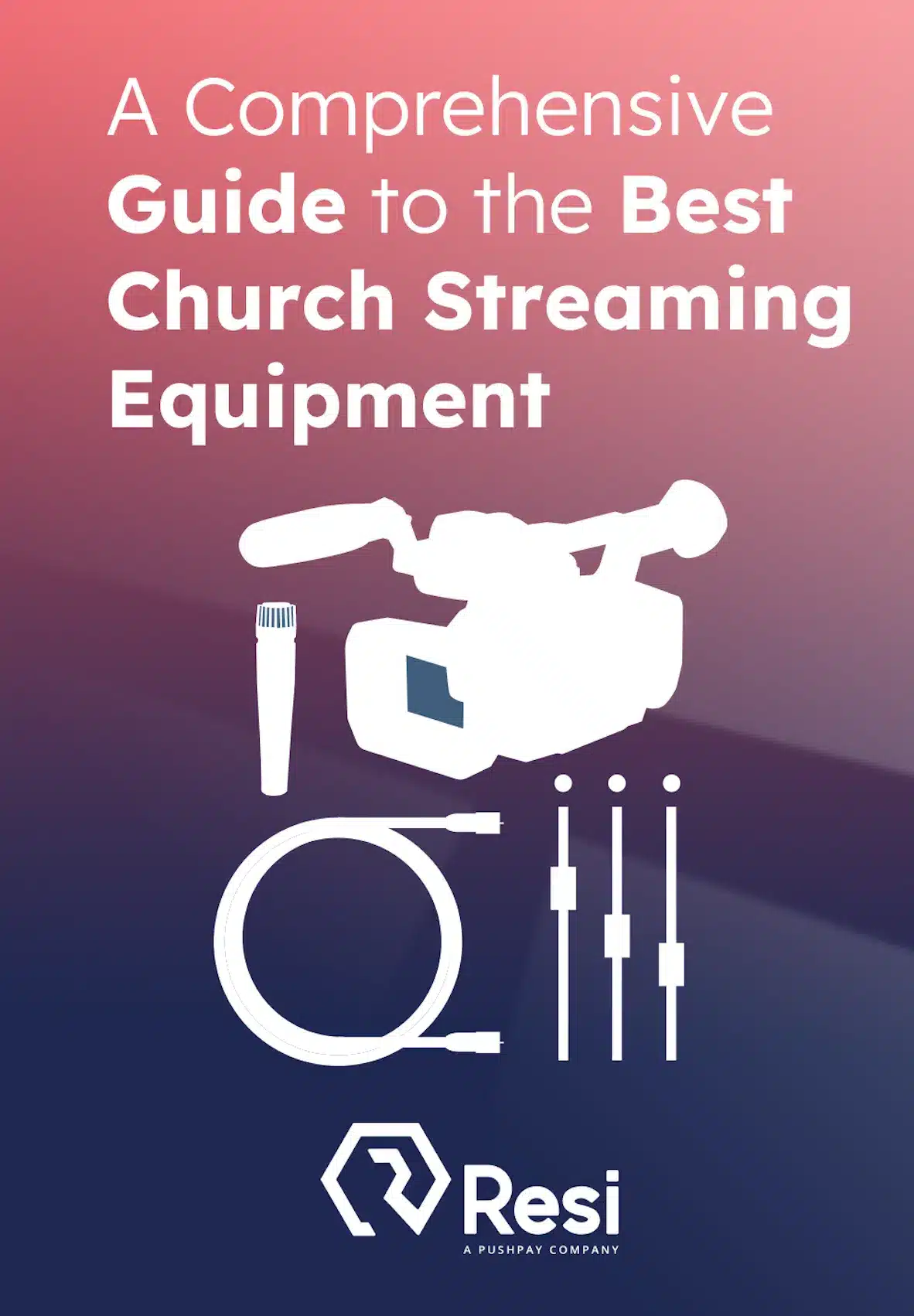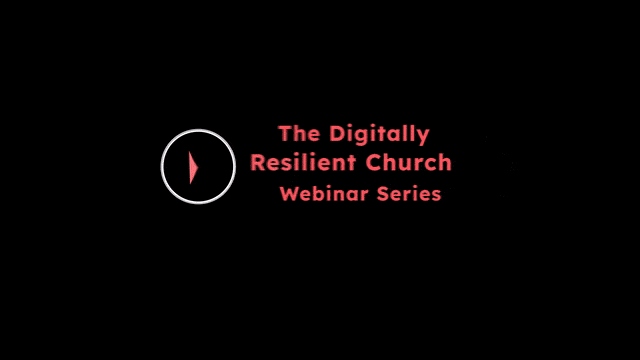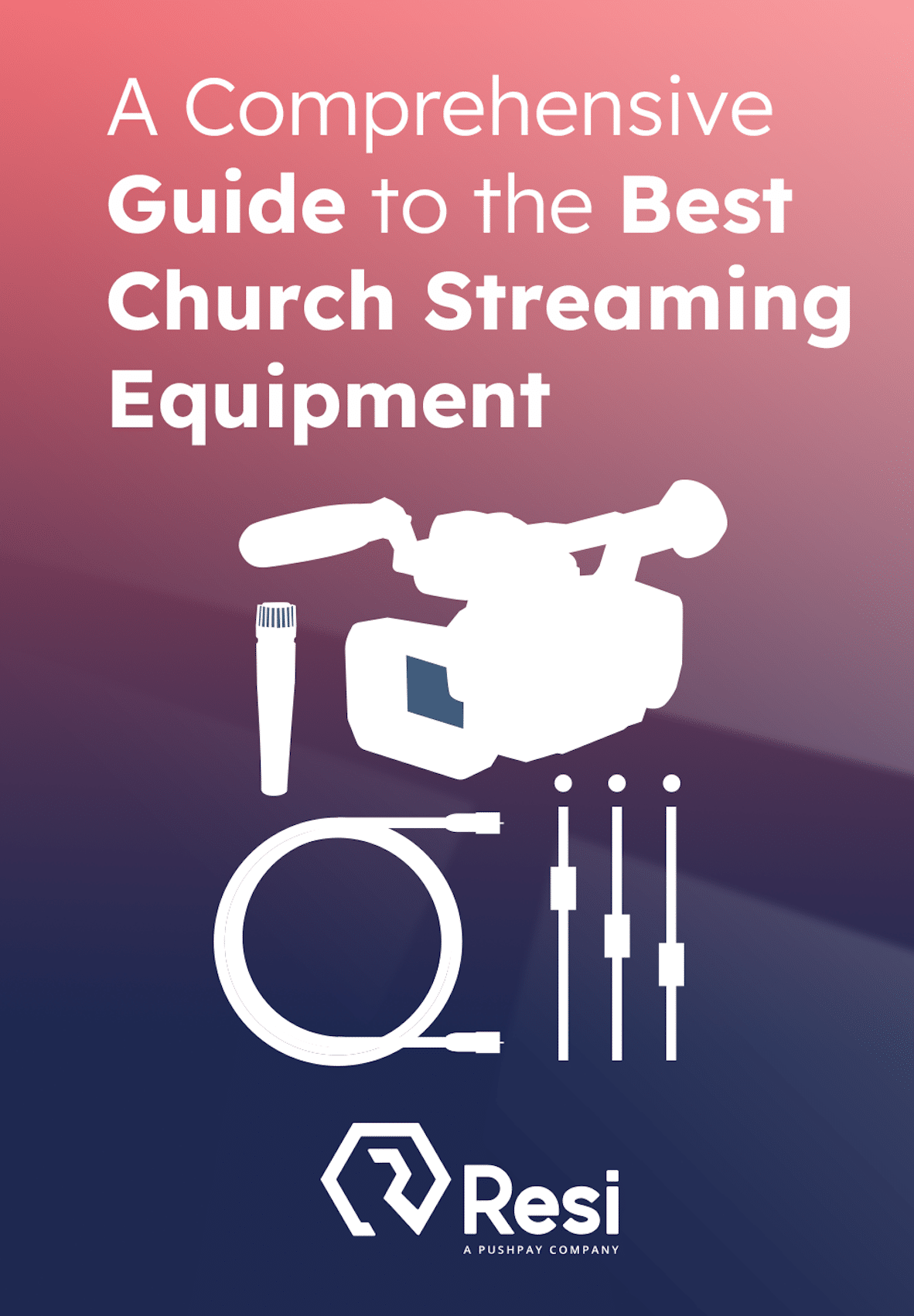
As we look ahead, live streaming is more critical than ever for churches and organizations to reach their audiences. But with this growing reliance on live video comes an increased need for security. From cyber threats to unauthorized access, protecting your video streams is vital to ensuring your content reaches its intended audience safely.
In this blog, we’ll explore how to secure your video streaming , and the best practices you can implement to protect your church’s live streams.
Best Livestreaming Equipment
Discover what top-rated equipment we recommend adding to your church streaming toolkit.
Download for free!
Use secure streaming protocols
At the heart of securing your video streams is using the right streaming protocols. Not all streaming protocols offer the same level of protection, so it’s essential to choose one that provides built-in encryption to secure the video data as it’s transmitted from your camera to your viewers.
RTMPS (Real-Time Messaging Protocol Secure)
RTMPS is a secure version of the popular RTMP protocol, which adds encryption through HTTPS (SSL/TLS). This protocol ensures that your live video stream is transmitted securely over the internet and can prevent data interception by malicious actors. If your church is streaming to platforms like Facebook Live or YouTube, you’re likely already using RTMPS, as it’s required by these platforms.
SRT (Secure Reliable Transport)
SRT is quickly becoming the standard for secure, low-latency video streaming. SRT not only encrypts video streams to prevent unauthorized access but also handles network challenges like packet loss and jitter, ensuring a smooth and reliable stream even in less-than-perfect conditions. For churches prioritizing security and reliability, SRT is a fantastic choice.
HLS with Encryption
HLS (HTTP Live streaming) is another popular protocol for delivering video streams, especially to a wide variety of devices. While HLS alone doesn’t provide encryption, you can add AES-128 encryption to your HLS streams to protect your video content from unauthorized access.
Implement access controls
Simply broadcasting your stream to the internet without access controls can leave your church’s video vulnerable to unauthorized viewers or even malicious actors. Implementing access controls is an essential step to securing your streams and ensuring only the right people can watch.
Password protection
One of the easiest ways to secure your stream is by requiring a password for access. Whether you’re streaming to your church’s website or a private platform, setting up password protection ensures that only those with the correct credentials can view the content.
Token-based authentication
For more advanced security, token-based authentication is a powerful option. Token-based authentication generates a unique token for each viewer, allowing them access to the stream for a limited time. This approach not only secures your content but also provides a better user experience by removing the need for passwords while maintaining security.
IP whitelisting
IP whitelisting is a method where only certain IP addresses are allowed to access your livestream. This is particularly useful for internal church meetings or events where you want to restrict access to a specific group, like your staff or leadership team.
Utilize encryption for data transmission
Encrypting your video data is one of the most effective ways to protect it from being intercepted by hackers or unauthorized third parties. Encryption protects your stream, making it unreadable without the decryption key.
Most secure streaming protocols, like RTMPS and SRT, already include encryption as part of their process. However, you can also add additional layers of encryption, such as AES-256 encryption, which is a military-grade encryption standard used to protect sensitive data.
If you’re streaming sensitive content, like private meetings or discussions, encryption becomes even more critical. Encrypting both the video and audio of your stream ensures that your content is fully protected throughout its journey from your source to your viewers.
Best Livestreaming Equipment
Discover what top-rated equipment we recommend adding to your church streaming toolkit.
Download for free!
Monitor for unauthorized access
Even with access controls and encryption in place, it’s important to actively monitor your streams for any signs of unauthorized access or suspicious activity. By keeping an eye on who is watching your stream and where they’re accessing it from, you can quickly detect any potential security breaches.
Many streaming platforms and video hosting services offer real-time analytics and monitoring tools that allow you to see how many viewers are watching, where they’re located, and what devices they’re using. If you notice a sudden spike in viewers from an unfamiliar location or unauthorized attempts to access your stream, you can take immediate action to secure it.
Secure streaming platforms and devices
Beyond just securing your video streams, it’s essential to protect the devices and platforms you use to manage your live streams. Any vulnerabilities in your equipment or software could be exploited by hackers to access your live streams or disrupt your broadcast.
Keep software updated
Make sure that all of your streaming software, encoders, and hardware are updated with the latest security patches. Hackers often exploit outdated software to access systems, so keeping everything updated is an easy way to mitigate risk.
Use secure platforms
When choosing a streaming platform, prioritize platforms that have strong security measures in place, such as Resi, which offers encrypted streaming with built-in safeguards against disruptions. Using trusted, secure platforms adds another layer of protection to your live streaming efforts.
Secure physical access
Finally, don’t forget the physical security of your streaming setup. Ensure that access to your streaming equipment, cameras, and servers is limited to authorized personnel. Use strong passwords on all devices and change them regularly to avoid unauthorized access.
Creating streaming security for your church in 2025
Securing your video streaming is more important than ever as cyber threats evolve and streaming becomes a core part of church outreach. By using secure streaming protocols, implementing access controls, encrypting data transmission, monitoring for unauthorized access, and securing your platforms and devices, you can protect your live streams from potential risks.
At Resi, we understand how crucial security is when it comes to delivering a flawless live stream. That’s why our platform offers industry-leading security features, including encrypted streams and resilient transmission, to make sure your content remains safe and secure. Ready to protect your live streams? Contact us today to learn how Resi can help you secure your video streaming efforts.
Best Livestreaming Equipment
Discover what top-rated equipment we recommend adding to your church streaming toolkit.
Download for free!







